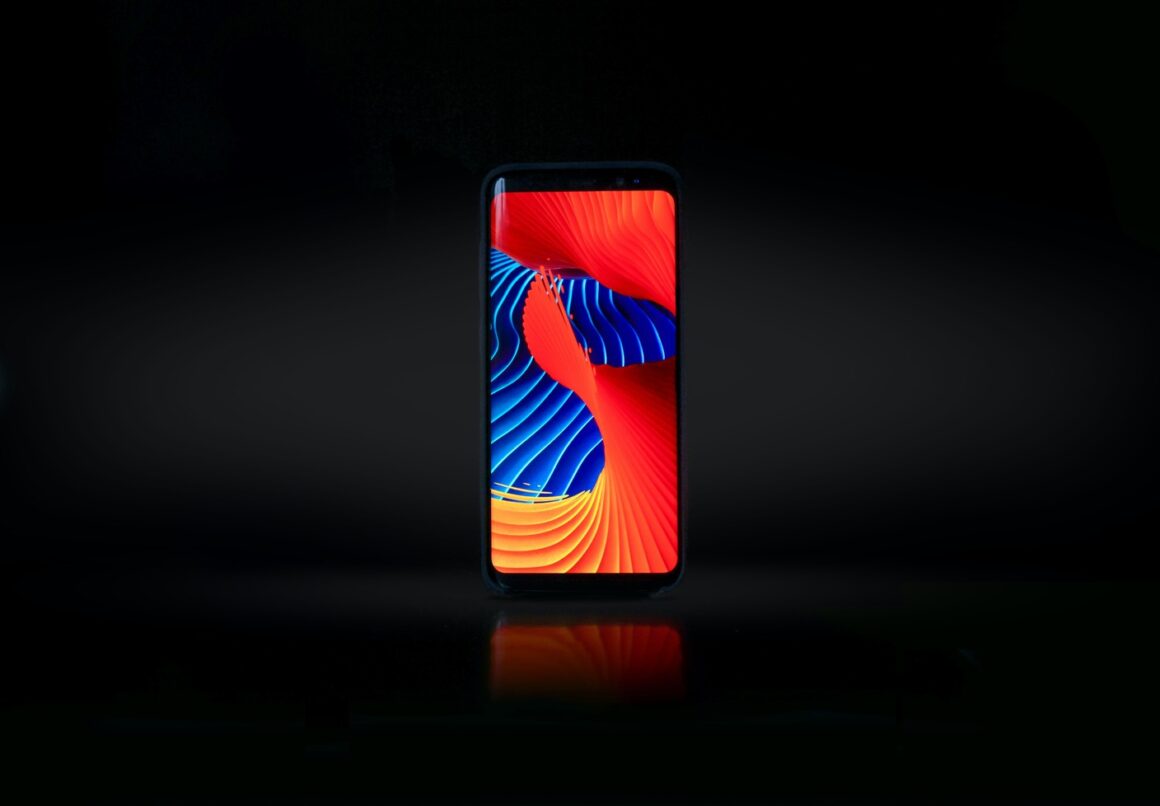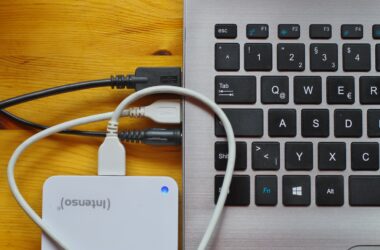1. Introduction
In the ever-evolving landscape of technology, the debate between iPhone and Android devices continues to be a topic of intense discussion and analysis. As we step into 2024, this debate becomes more relevant than ever. With both platforms having undergone significant updates and innovations, choosing between an iPhone and an Android device is not just a matter of brand loyalty, but a decision that impacts our daily digital interactions.
The world of smartphones is constantly changing, and with each year, the competition between these two giants of the industry brings new features, technologies, and user experiences to the forefront. This ongoing rivalry has not only shaped the way we think about mobile technology but also the way we use it in our everyday lives. In 2024, this debate takes on new dimensions, as both platforms have introduced groundbreaking features and capabilities, making the choice between them more challenging and significant than ever.
The purpose of this article is to delve into an unbiased, detailed comparison of iPhones and Android devices as they stand in 2024. We aim to explore various aspects such as user experience, technical specifications, camera capabilities, software updates, app ecosystems, and much more. This comparison is not just about listing features, but understanding how these devices fit into our lifestyles, meet our needs, and provide value for money in today’s fast-paced world. Whether you are a tech enthusiast, a casual smartphone user, or someone standing at the crossroads of making a decision, this article seeks to provide you with a comprehensive guide to make an informed choice in the iPhone vs. Android debate.
2. Historical Context and Evolution
The rivalry between iOS and Android is not just a contemporary phenomenon but a saga that traces back to the origins of modern smartphones. Understanding the historical context and evolution of these two platforms is crucial to appreciate the depth of their current competition.
The Dawn of iOS
iOS, the operating system that powers Apple’s iPhone, made its debut in 2007 alongside the first iPhone. This launch marked a significant milestone in mobile technology. Steve Jobs, co-founder of Apple Inc., introduced the iPhone as a revolutionary product that combined a phone, an iPod, and an Internet communicator. The original iOS, then known simply as iPhone OS, brought a user-friendly interface with features like multi-touch gestures, visual voicemail, and a mobile browser. It set a new standard for what a smartphone could be.
Android’s Entry
Contrasting the closed, controlled ecosystem of Apple, Android emerged as an open-source alternative. Co-founded by Andy Rubin, Rich Miner, Nick Sears, and Chris White in 2005 and later acquired by Google in 2005, Android made its public debut in 2008 with the HTC Dream (also known as T-Mobile G1 in the US). Android’s open nature allowed for a wide variety of manufacturers to adopt and modify the OS, leading to a rapid expansion in the variety of devices available to consumers.
Milestones in iOS Development
Over the years, iOS has seen numerous updates, each bringing significant improvements:
- App Store (2008): Revolutionized the way software is distributed and monetized, creating a new ecosystem of mobile applications.
- Siri (2011): Integration of this voice-controlled personal assistant set a new bar for AI interaction within a mobile OS.
- Touch ID (2013) and Face ID (2017): Introduced biometric security, enhancing user convenience and security.
- iOS 14 (2020): Brought widgets to the home screen and introduced new privacy features.
Android’s Evolution
Android’s journey is characterized by its flexibility and adaptability:
- Google Play Store (2008): Provided a platform for distributing Android apps, mirroring the App Store’s concept.
- Material Design (2014): Introduced a new design language, significantly improving the aesthetic and user experience.
- Google Assistant (2016): Enhanced AI capabilities competing directly with Siri.
- Regular OS updates: Focused on improving user experience, security, and performance.
The evolution of iOS and Android reflects their respective philosophies: iOS prioritizing a controlled, integrated experience, and Android championing customization and variety. These key milestones not only highlight their developmental journey but also set the stage for their current standings in 2024, where both continue to innovate and redefine the mobile experience.
3. User Experience Comparison: iPhone vs Android
The user experience (UX) is a critical aspect when comparing iPhones and Android devices. This comparison focuses on three main areas: interface design and user-friendliness, customization capabilities, and performance and speed.
Interface Design and User-Friendliness
iPhone (iOS): iOS has always been lauded for its intuitive and user-friendly interface. Apple’s design philosophy emphasizes simplicity and elegance, offering a clean and consistent user experience across all its devices. The navigation is straightforward, with a focus on ease of use. iOS interfaces are generally less cluttered and more streamlined, which many users find appealing, especially those who prioritize simplicity in their digital interactions.
Android: In contrast, Android offers a more versatile interface, which can vary significantly across devices due to its open-source nature. This diversity means that Android can cater to a wider range of user preferences. For tech-savvy users who enjoy customization, Android’s interface can be a playground of possibilities. However, this variety can sometimes lead to a less consistent experience, which might be overwhelming for users who prefer simplicity.
Customization Capabilities
iPhone (iOS): Historically, iOS has offered limited customization options. However, recent updates have introduced more flexibility, like widget customization and app library organization. Despite these additions, iOS still maintains a relatively controlled environment, ensuring a consistent and secure user experience but at the cost of limited personalization.
Android: Android stands out in its customization capabilities. Users have the freedom to change almost every aspect of their device’s interface, including launchers, widgets, and even the entire operating system with custom ROMs. This level of customization allows users to tailor their devices to their specific needs and preferences, making Android the go-to choice for users who value personalization.
Performance and Speed
iPhone (iOS): iPhones are known for their smooth and responsive performance. This is partly due to Apple’s integrated approach, where both the hardware and software are designed to work seamlessly together. iOS is optimized to run efficiently on iPhone hardware, often resulting in a fluid and lag-free experience, even on older models.
Android: Android’s performance can vary widely depending on the hardware specifications of the device. High-end Android phones offer performance that can rival iPhones, with fast processors and ample RAM contributing to a smooth experience. However, the Android market also includes a range of mid-range and budget devices, where performance might not be as optimized. One advantage of Android is its scalability across different hardware, offering a range of performance options to suit various budgets.
In conclusion, the user experience of iPhone and Android devices differs significantly in interface design, customization, and performance. While iPhones offer simplicity and streamlined user-friendliness, Android devices shine in their customization possibilities and offer a wide range of performance options. The choice between the two often boils down to personal preference and priorities in terms of usability, aesthetics, and functionality.
4. Technical Comparison
When comparing iPhones and Android devices, it’s essential to delve into the technical aspects that define their functionality and appeal. This includes a comparison of their software updates, hardware specifications, and security features.
Software: iOS Updates vs. Android Updates
iOS Updates: One of the strongest points of the iOS ecosystem is the consistency and timeliness of its software updates. Apple devices receive iOS updates simultaneously, ensuring that even older iPhone models stay relatively current with the latest features and security patches. This uniformity provides a more predictable and stable user experience across different iPhone models.
Android Updates: Android updates are more fragmented due to the diversity of devices and manufacturers in the ecosystem. High-end Android phones, especially those from flagship lines like Samsung’s Galaxy or Google’s Pixel, typically receive timely updates. However, many other Android devices may experience delays in receiving the latest updates or may not receive them at all. This fragmentation can lead to a disparity in user experience and security across different Android devices.
Hardware: Processor, Battery Life, and Storage Options
Processor:
- iPhone: Apple’s proprietary chips, like the A-series and the newer M-series, are renowned for their powerful performance and efficiency. These chips ensure that iPhones can handle complex tasks and graphics-intensive applications with ease.
- Android: Android devices use a variety of processors, the most common being Qualcomm Snapdragon and Samsung Exynos. The performance of these processors can range from high-end to budget-friendly, offering a wide choice to consumers based on their needs and budget.
Battery Life:
- iPhone: iPhones have historically lagged behind some Android devices in terms of battery capacity, but Apple’s optimization of hardware and software often leads to efficient power consumption, translating to satisfactory battery life.
- Android: Android devices vary greatly in battery life, with some models boasting large battery capacities that exceed the average iPhone. This variance gives users the flexibility to choose a device that aligns with their usage patterns and battery life expectations.
Storage Options:
- iPhone: iPhones do not support external storage but offer various models with different internal storage capacities, typically starting from a base model and going up to higher capacities, albeit at a higher cost.
- Android: Many Android devices offer expandable storage through microSD cards, in addition to various internal storage options. This flexibility is a significant plus for users who need more storage without paying a premium.
Security Features and Privacy Policies
Security Features:
- iPhone: Apple places a strong emphasis on security and privacy, with features like Face ID, Touch ID, and end-to-end encryption in iMessage and FaceTime. The controlled ecosystem of iOS also plays a significant role in minimizing security risks.
- Android: Android has made significant strides in security, offering features like fingerprint sensors, face unlock, and regular security patches. However, the open nature of the Android platform can sometimes make it more susceptible to security threats.
Privacy Policies:
- iPhone: Apple has positioned itself as a leader in protecting user privacy, with strict policies on data access and a transparent approach to what is collected and how it is used.
- Android: Google has improved its privacy policies over the years, but the company’s business model, which relies heavily on data-driven advertising, can raise concerns about user privacy.
In summary, the technical comparison between iPhones and Android devices reveals distinct differences in their approach to software updates, hardware specifications, and security features. While iPhones offer consistency and integration, Android devices provide diversity and flexibility. The choice between the two will depend on the user’s priorities in terms of software reliability, hardware performance, and commitment to security and privacy.
5. Camera and Multimedia Capabilities
The camera and multimedia capabilities of smartphones have become pivotal factors in the decision-making process for consumers. This section compares the camera quality and features of iPhones and Android devices, as well as their multimedia and entertainment functionalities.
Camera Quality and Features
iPhone:
- Quality: iPhones are renowned for their camera quality, offering crisp, clear images with excellent color accuracy. Apple’s focus on camera technology ensures that even in challenging lighting conditions, users can expect high-quality photos and videos.
- Features: iPhones typically offer advanced camera features like Portrait mode, Night mode, and more recently, ProRAW and ProRes video formats. The integration of hardware and software results in an intuitive camera experience, with features like Smart HDR and Deep Fusion providing enhanced image processing.
Android:
- Quality: The camera quality in Android devices varies widely due to the range of manufacturers and models. High-end Android phones, such as those from Samsung, Google, and Huawei, often match or even surpass iPhones in terms of camera quality, offering sharp images and excellent low-light performance.
- Features: Android devices frequently lead in camera innovation, with features like higher megapixel counts, periscope zoom lenses, and various specialized sensors for depth, macro, and monochrome photography. Some Android phones also offer more manual controls for photography enthusiasts.
Multimedia and Entertainment Functionalities
iPhone:
- Multimedia Experience: The multimedia experience on iPhones is seamless, especially within the Apple ecosystem. Features like AirPlay, Apple Music, and the seamless integration with other Apple devices like iPad and MacBook enhance the entertainment experience.
- App Ecosystem: The App Store offers a vast array of apps and games, many of which are optimized for the iPhone’s hardware, ensuring a smooth and engaging user experience.
Android:
- Multimedia Experience: Android devices offer a high degree of versatility in multimedia functionalities. Features like split-screen multitasking, customizable home screens, and support for a wide range of file formats make Android phones highly adaptable for various entertainment needs.
- App Ecosystem: The Google Play Store has a broad selection of apps and games. The open nature of the Android platform allows for a wider range of apps and customizations, though this can sometimes lead to a less streamlined experience compared to iOS.
In conclusion, both iPhones and Android devices offer robust camera and multimedia capabilities, each with their unique strengths. iPhones provide a consistent, high-quality camera experience and a seamless multimedia ecosystem, particularly for users already invested in other Apple products. Android devices, on the other hand, offer greater versatility and innovation in camera technology and a more customizable entertainment experience. The choice between the two often comes down to personal preference and the specific multimedia needs and camera functionalities a user values most.
App Ecosystem and Development
The app ecosystems of iOS and Android are foundational to their user experience. This section explores the availability and diversity of apps on both platforms, the differences in app development for iOS and Android, and the impact of these factors on users and developers.
6. App Availability and Diversity
iOS:
- Availability: The App Store for iOS is known for its high-quality, extensive collection of apps. Apple’s strict review process ensures that apps meet a certain standard before they’re made available to users.
- Diversity: While this stringent review process can sometimes limit the range of available apps, it generally means that iOS apps are reliable and well-integrated with the latest iPhone features.
Android:
- Availability: The Google Play Store offers a vast and varied selection of apps for Android users. The open nature of the Android platform means that users have access to a wide range of apps, including those that may not be available on the App Store.
- Diversity: Android’s flexibility allows for a broader range of apps, including those that offer more specialized or niche functionalities. However, this can sometimes result in a compromise on app quality or consistency.
Differences in iOS vs Android Development
- Development Environment: iOS apps are developed using Apple’s Xcode, and the primary language is Swift (formerly Objective-C). Android apps are typically developed in Java or Kotlin using Android Studio.
- Design Philosophy: iOS app design follows Apple’s Human Interface Guidelines, emphasizing a clean, consistent design. Android apps use Material Design principles, focusing on responsive and natural motion, and bold, graphic interfaces.
- Market Reach: iOS apps tend to generate higher revenue, partly due to the demographic of iPhone users. Android has a broader global market reach due to the variety of devices and price points.
- Release and Update Cycles: Releasing and updating apps on iOS can be more time-consuming due to the rigorous review process. Android offers a more flexible and quicker deployment of apps and updates.
Impact on Users and Developers
- Users: iOS users benefit from a more controlled and secure app environment, with consistent quality but potentially less diversity. Android users enjoy a wider range of apps, including more customizable and varied options, though this comes with variable app quality.
- Developers: iOS development can be more resource-intensive and demanding in terms of meeting Apple’s standards, but often leads to higher revenue per user. Android development is more accessible and offers a larger potential user base, but developers may face challenges in optimizing their apps for a wide range of devices and screen sizes.
In summary, the app ecosystems of iOS and Android both have their unique advantages and challenges. iOS offers a more curated experience with high-quality apps, while Android provides greater diversity and flexibility. For developers, the choice between these platforms involves considerations of market reach, revenue potential, and design preferences. For users, it often comes down to the balance between app quality, variety, and the level of customization desired.
7. Pros and Cons of iPhone and Android Devices
When choosing between an iPhone and an Android device, understanding the advantages and disadvantages of each platform is crucial. This comparison considers various user types, from casual users to tech enthusiasts.
iPhone Pros
- User Experience: Known for its intuitive interface, iOS offers a seamless and consistent user experience across all Apple devices.
- Software Updates: iPhones receive regular and timely software updates, ensuring security and feature enhancements even on older models.
- App Quality: The App Store is well-curated, providing high-quality and secure apps.
- Ecosystem Integration: iPhones work seamlessly with other Apple products, offering a cohesive experience with devices like the iPad, MacBook, and Apple Watch.
- Resale Value: iPhones typically retain a higher resale value over time compared to most Android devices.
iPhone Cons
- Cost: iPhones are generally more expensive, with limited options for lower-budget consumers.
- Customization: Limited customization options for the iOS interface and settings.
- Hardware Diversity: Limited range of devices, restricting choices in terms of size, features, and price.
Android Pros
- Customization: Android offers extensive customization options, allowing users to tailor the interface and functionality to their preferences.
- Device Variety: A wide range of devices from various manufacturers, catering to all budgets and preferences.
- Hardware Features: Often first to market with new hardware innovations and features.
- Expandable Storage: Many Android devices offer expandable storage options.
- Choice of Manufacturers: Users can choose from different manufacturers, each offering unique features and user experiences.
Android Cons
- Fragmentation: Variability in software updates and support across different devices and manufacturers.
- App Quality: While the Google Play Store has a vast selection of apps, it can be more variable in terms of quality and security.
- Resale Value: Generally lower resale value than iPhones.
- Consistency: The user experience can vary significantly between different Android devices.
Considerations for Different Types of Users
- Casual Users: May prefer iPhones for their ease of use, reliable performance, and seamless integration with other Apple services. Android devices might appeal for their affordability and variety.
- Tech Enthusiasts: Might lean towards Android for the customization options and the diversity of hardware. iPhone could be a choice for those valuing a streamlined experience and regular software updates.
- Photography Enthusiasts: Both platforms offer excellent camera capabilities, though preferences may vary depending on specific camera features.
- Business Users: iPhones are
often favored for their security features and strong ecosystem integration, which is beneficial for productivity and synchronization across devices. Android devices, on the other hand, offer more choices in hardware and can be better suited for users requiring specific features or custom enterprise solutions.
- Budget-Conscious Users: Android provides a wider range of devices at various price points, making it more accessible for budget-conscious consumers. While iPhones are generally more expensive, the higher resale value can be a factor for consideration.
- Gamers: High-end Android devices with cutting-edge processors and graphics capabilities can be attractive for mobile gaming. However, iPhones are also known for their smooth performance and a wide array of games optimized for iOS.
In summary, the choice between an iPhone and an Android device largely depends on individual preferences and needs. iPhones offer a polished, user-friendly experience with consistent updates and strong ecosystem integration, ideal for users who prefer simplicity and reliability. Android devices stand out for their customization options, diversity in hardware, and accessibility across various price ranges, appealing to users who value flexibility and choice. Both platforms have their unique strengths and cater to different user requirements, making the decision a personal one based on specific criteria and lifestyle needs.
8. Cost Analysis and Value for Money
When evaluating iPhones and Android devices, understanding their pricing models, product range, and long-term value is crucial for consumers. This section compares these aspects, focusing on the overall value for money offered by each platform.
Pricing Models and Product Range
iPhone:
- Pricing Models: iPhones are generally positioned in the premium segment of the market. The pricing reflects the brand’s focus on quality, innovation, and user experience. Even the entry-level models are typically more expensive than many mid-range Android devices.
- Product Range: Apple offers a relatively limited selection of iPhone models at any given time, focusing on a streamlined product line that targets various segments of the premium market. This includes the standard, Pro, and Pro Max models, each with different price points and features.
Android:
- Pricing Models: Android devices cover a broad spectrum of price points, from budget-friendly options to high-end premium models. This diversity makes Android accessible to a wider range of consumers with varying budgets.
- Product Range: The Android market is vast, with numerous manufacturers offering a wide array of devices. This includes budget phones, mid-range models, and flagship devices from brands like Samsung, Google, OnePlus, and more.
Long-Term Value
Resale Value:
- iPhone: One of the significant advantages of iPhones is their high resale value. iPhones tend to depreciate at a slower rate compared to Android devices, making them a better long-term investment in terms of resale.
- Android: Android devices generally have a lower resale value, especially for mid-range and budget models. However, flagship Android phones from top brands can maintain a reasonable resale value.
Software Support:
- iPhone: Apple provides extended software support for its devices, with iOS updates available for older models for several years post-release. This prolonged support not only extends the life of the device but also ensures security and feature updates.
- Android: Software support for Android devices varies significantly among manufacturers. While flagship devices may receive several years of updates, budget and mid-range models often have shorter support timelines.
Assessing Value for Money
- iPhone: The value proposition of an iPhone lies in its consistent performance, long-term software support, high resale value, and seamless integration with other Apple products. The higher upfront cost can be justified by these factors, making it a solid long-term investment for those prioritizing these aspects.
- Android: Android devices offer more flexibility in terms of budget. The value for money in Android phones can be found in their diverse features, customization options, and the ability to choose a device that specifically meets individual needs and price points. For consumers looking for variety and affordability, Android presents a compelling choice.
In conclusion, the value for money when choosing between an iPhone and an Android device depends on what aspects of a smartphone are most important to the consumer. iPhones offer a premium experience with a higher upfront cost but provide long-term value through software support and resale value. Android devices cater to a broader range of budgets and preferences, with a diverse product range and customizable features, offering value in terms of choice and accessibility.
Conclusion
The comprehensive comparison of iPhones and Android devices across various dimensions reveals a landscape rich in diversity, innovation, and tailored user experiences. This conclusion aims to distill the key takeaways from the comparison and provide a balanced view to assist readers in making an informed choice.
Key Takeaways
- User Experience: iPhones offer a streamlined, user-friendly experience with a focus on consistency and integration within the Apple ecosystem. Android devices, on the other hand, provide extensive customization options and a diverse range of user experiences across different manufacturers.
- Technical Aspects: In terms of technical capabilities, iPhones are known for their efficient performance, regular software updates, and strong emphasis on privacy and security. Android devices offer a wide variety in terms of hardware features and are often at the forefront of new technological innovations.
- Camera and Multimedia: Both platforms excel in camera and multimedia capabilities, with iPhones providing a consistently high-quality camera experience and Android devices offering a range of innovative camera features and more flexibility in multimedia handling.
- App Ecosystem: The App Store on iOS is characterized by a curated selection of high-quality apps, while the Google Play Store on Android provides a broader range of apps with varying degrees of customization and functionality.
- Cost and Value for Money: iPhones generally come with a higher price tag but offer long-term value in terms of software support and resale value. Android devices cater to a wider range of budgets and offer value through hardware diversity and customization.
Balanced View for Informed Choice
When choosing between an iPhone and an Android device, it is important to consider individual needs, preferences, and budget. If you value a cohesive, user-friendly experience with regular updates and are invested in the Apple ecosystem, an iPhone may be the preferred choice. On the other hand, if customization, hardware variety, and budget flexibility are your priorities, an Android device could be more suitable.
Both platforms are evolving and adapting to new technological trends, ensuring that they continue to offer cutting-edge features and experiences. The decision between iPhone and Android should be based on which platform aligns better with your lifestyle, usage patterns, and expectations from a smartphone.
In conclusion, whether you choose iPhone or Android, both platforms offer robust, feature-rich experiences that cater to a wide range of users. Your decision will ultimately hinge on which platform’s strengths align best with your personal or professional needs, ensuring that your smartphone is not just a device, but a companion that enhances your daily life.







